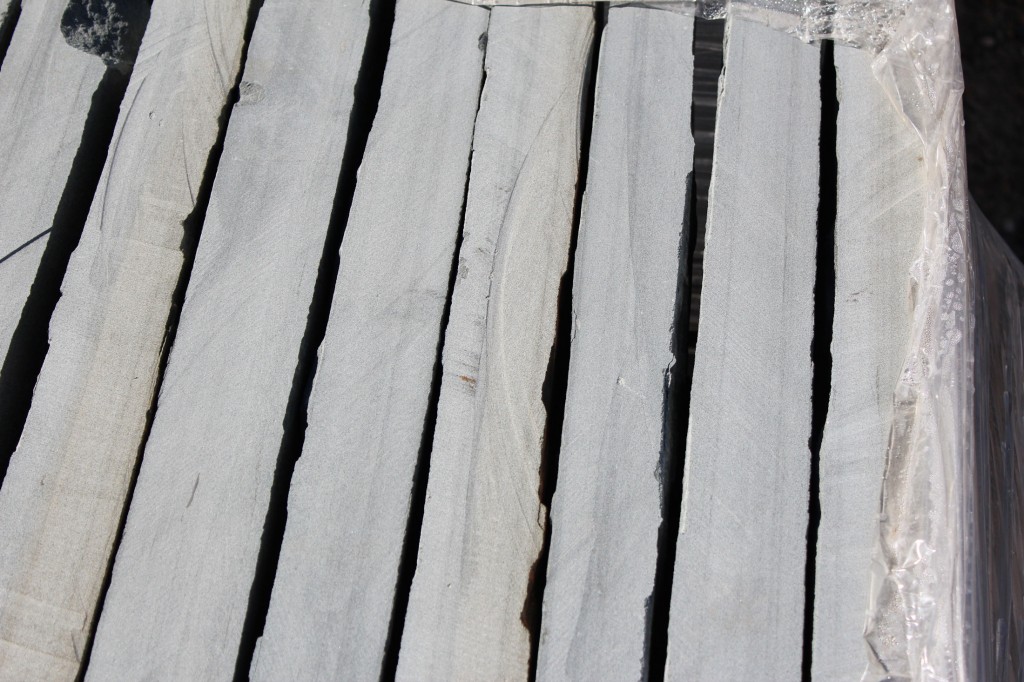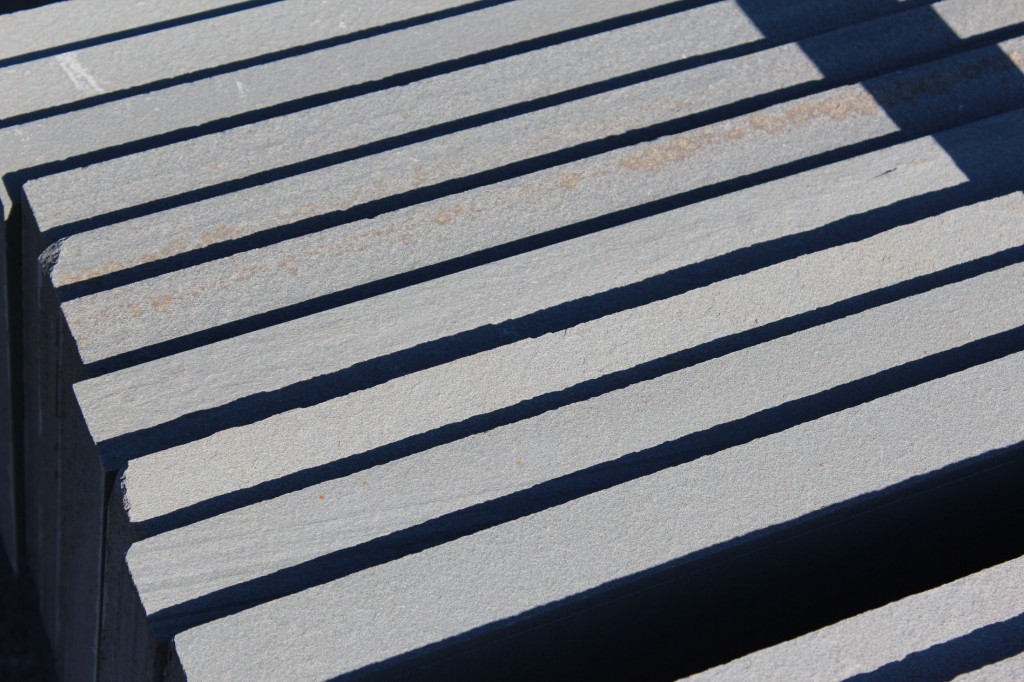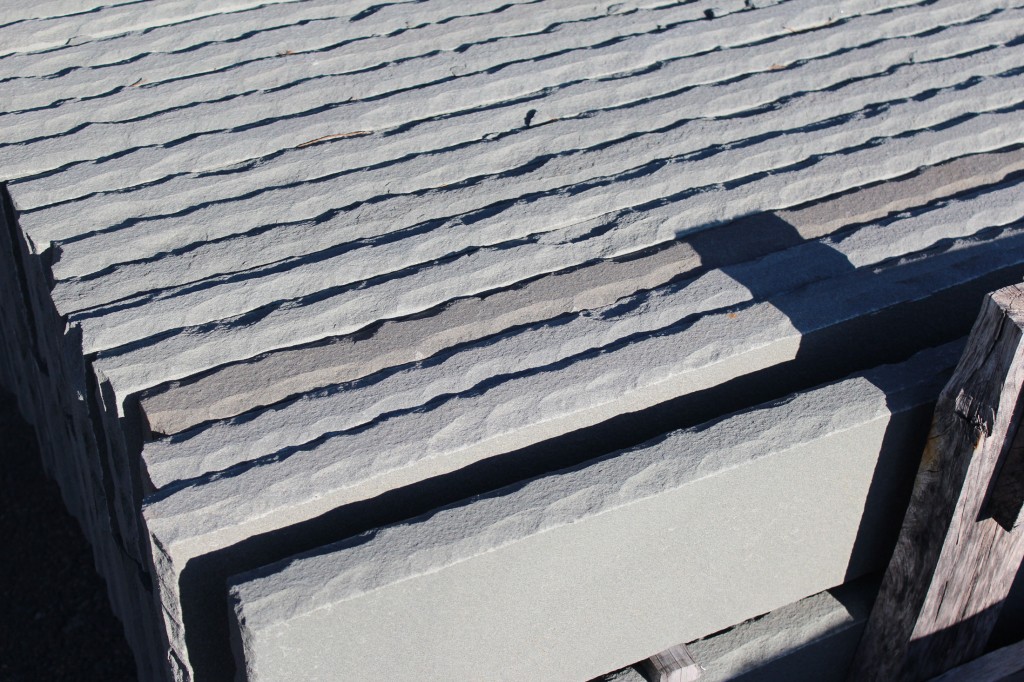You’ve decided to use flagstone in the landscape. Good call! You may not be done making decisions, however. If the stone will be used in an application where you see the edge of the piece (step treads, wall caps, etc) you’ll have to think about the finished look.
Thickness
The first thing to consider is the thickness of the stone. The typical stone we use for a wet-lay patio can vary in thickness, from a hair under an inch to over two inches. When building steps or a cap, you want to see a consistent thickness of stone all the way across.
Something else to consider is that often a thicker stone will look better. That 1″ thick flagstone can look wimpy. A 2″ piece has a lot more heft to it. In some cases you may want to go even thicker, but just be aware that now you’re looking at significant additional costs.
The Edge – Sawcut Flagstone
The most common edge “treatment” isn’t really even a treatment. The rectangular slabs of flagstone are cut with a giant saw, and you can often see the marks from the blade on the stone. It’s fine, but it’s certainly not an aesthetically exciting finish.
The Edge – Thermaled Flagstone
One of the most common edge treatments (and one that I think looks great) is thermal-treated. This is accomplished by taking a piece of sawcut flagstone, wetting down the edge, and heating it with a torch. Done correctly the water turns to steam and pops off small pieces of the stone, resulting in a smoothly textured and very consistent surface. Done incorrectly, the piece overheats and splits. This is why most stone yards offer to provide thermaled stone.
The Edge – Chiseled Flagstone
Another way of treating the edges of flagstone is to give them a chiseled appearance. It’s another technique that’s simple to describe and more difficult to do: the mason uses a chisel to remove small, evenly sized pieces of material from the edge of the stone until it has a very cool, consistent rock-faced look across the edge. Some companies do this on site, but most get the stone from the stoneyard like this.
When designing with stone there are so many variables to consider. While it seems inconsequential at first, the right edge treatment can make the difference between a good result and a great result. If you’re looking for help achieving that great result, contact me for a design consultation!




Hey Dave — You stole my thunder! I have a few similar blog posts in the can for my site. I guess that can happen when you’re a dealing with a great material like flagstone. The redesigned site looks great btw!
Thanks Clark! This is actually an intermediate step. I still owe my designer some content, at which point you’ll see a VERY different look to the site, but on the same framework.
As for the flag, I love working with it and I’m looking forward to seeing your take on it. The idea for this post came when I was (once again) emailing a client photos of edge treatments to explain what I was proposing. It occurred to me, why not just have the post so I can link to it AND maybe get a little Google love?